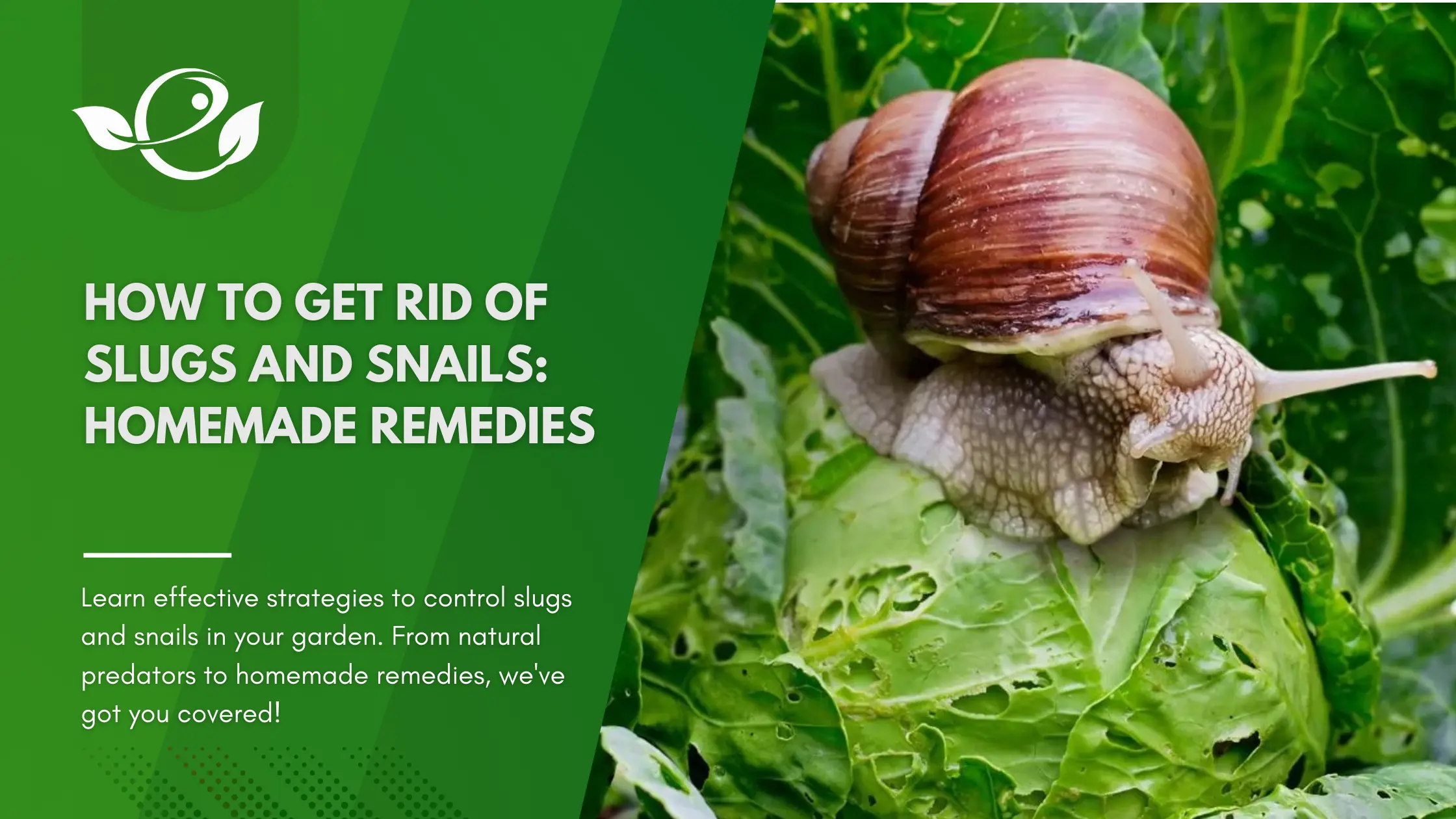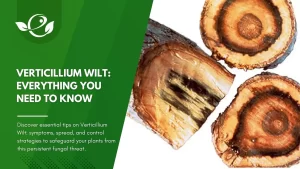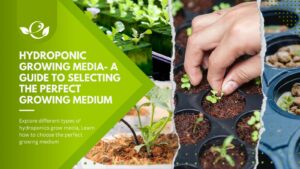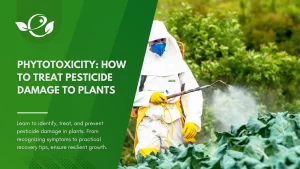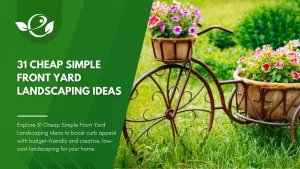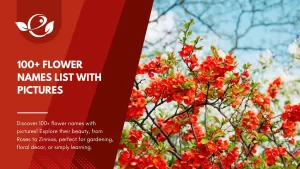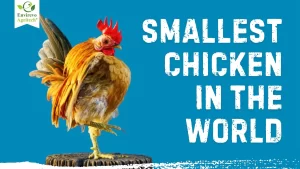Table of Contents
Gardening is a rewarding hobby that brings joy, beauty, and even sustenance to our lives. However, it comes with its fair share of challenges, one of the most persistent being the battle against pests. Among the most troublesome of these pests are slugs and snails. These slimy creatures can quickly turn a flourishing garden into a landscape of chewed leaves and ruined crops. Understanding how to manage and eradicate these pests is crucial for any gardener aiming to maintain a healthy and productive garden.
Slugs and snails are voracious eaters, primarily feeding on the tender parts of plants. This includes leaves, stems, and even fruits and flowers. Their feeding habits can cause significant damage, particularly to young plants and seedlings. Unlike some pests that might target specific plants, slugs and snails have a wide-ranging diet, making almost any part of your garden vulnerable.These pests reproduce quickly, with some species laying hundreds of eggs in a single season. This rapid reproduction rate means that a small slug or snail problem can quickly become a large infestation if not managed properly.
This guide aims to provide comprehensive strategies for managing and eliminating slugs and snails from your garden. By combining prevention, natural and chemical controls, and long-term management strategies, you can keep your garden healthy and thriving.
Understanding Slugs and Snails
Biology and Behavior
Slugs and snails are mollusks that thrive in moist environments. While slugs lack shells, snails carry a coiled shell on their backs. Both are nocturnal and prefer hiding in damp, dark places during the day.
- Life Cycle and Reproduction: Slugs and snails are hermaphrodites, meaning each individual has both male and female reproductive organs. This allows them to mate with any other individual. They lay clusters of eggs in moist soil or under debris, which hatch into tiny slugs or snails.
- Habitats and Feeding Habits: They are attracted to gardens because they provide ample food sources and hiding places. They primarily feed on tender, leafy plants, decaying plant matter, and fruits.
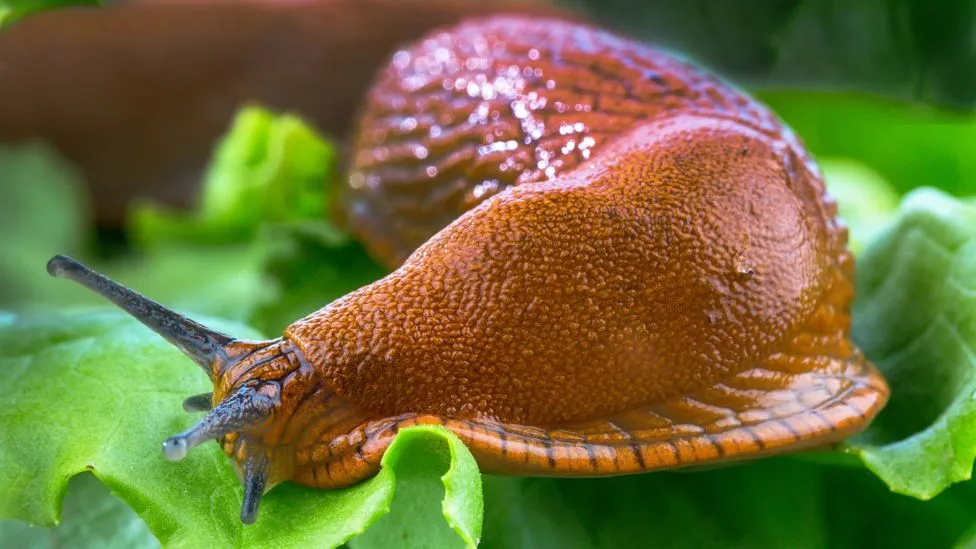
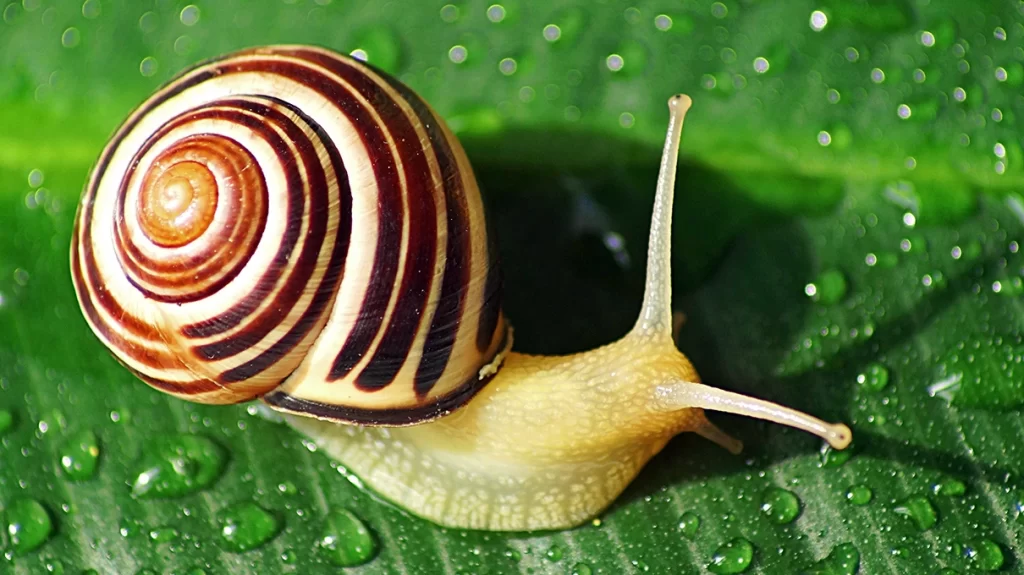
Impact on Gardens
Slugs and snails primarily target tender, leafy plants, leaving irregular holes in foliage. Common signs of their presence include slimy trails and ragged plant damage.
- Common Plants Targeted: Lettuce, hostas, strawberries, and marigolds are favourites. Seedlings and young plants are particularly vulnerable.
- Damage Patterns: Look for holes in leaves, chewed edges, and slime trails on the soil and plants.
Can also be found in
Barley, Bean, Bitter Gourd, Cabbage, Canola, Carrot, Cauliflower, Citrus, Cotton, Cucumber, Currant, Brinjal, Garlic, Black & Green Gram, Grape, Lentil, Lettuce, Millet, Onion, Ornamental, Pea, Capsicum & Chilli, Potato, Pumpkin, Rice, Rose, Soybean, Strawberry, Sugarcane, Tomato, Wheat, Zucchini.
Symptoms
Snails and slugs are widespread pests that can cause serious destruction in crops if they develop in large numbers. They eat irregularly and often leave large holes in leaves but can also affect stems, flowers, tubers and bulbs. In potatoes, they can make round superficial holes in the skin or dig extensive cavities into the tubers, causing considerable damage. Silvery slime trails can be found on plant foliage and soil surfaces. They particularly prey on young tender plants and can kill young seedlings by completely eating them.
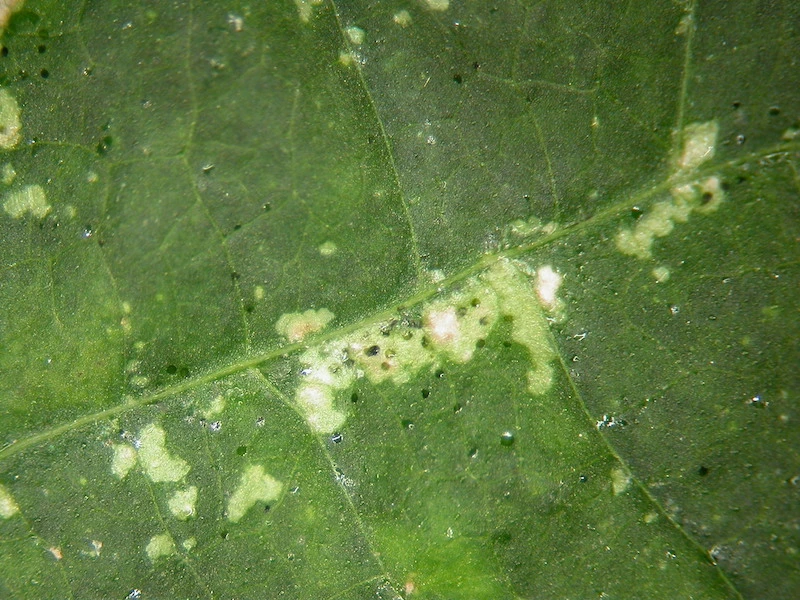
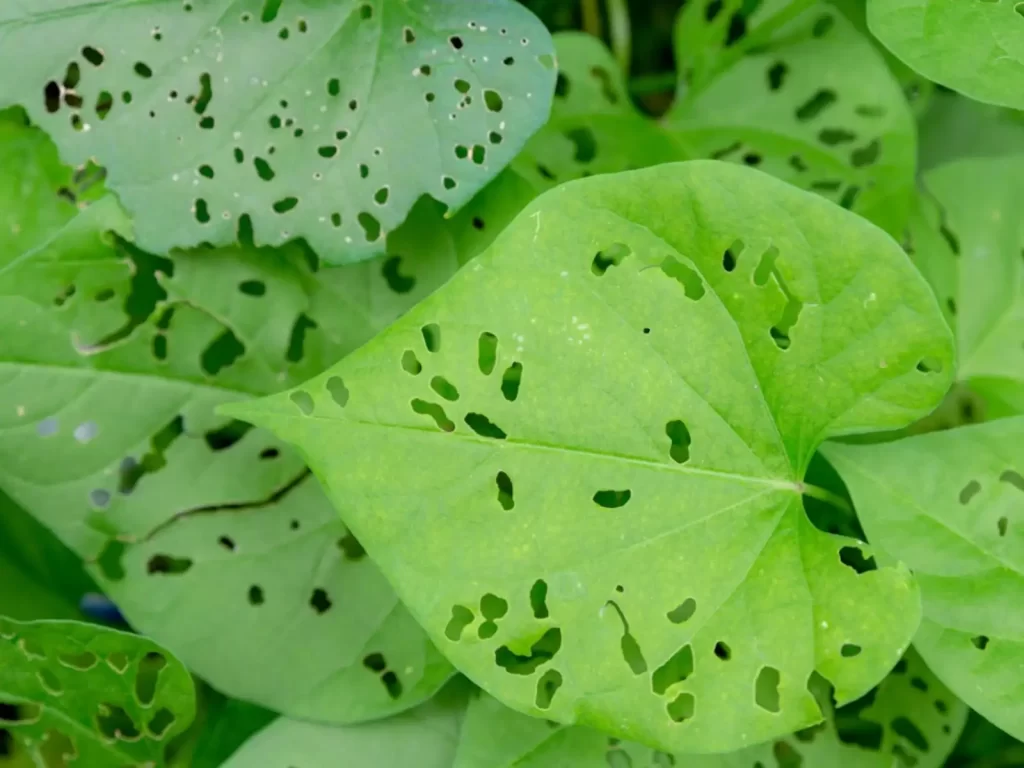
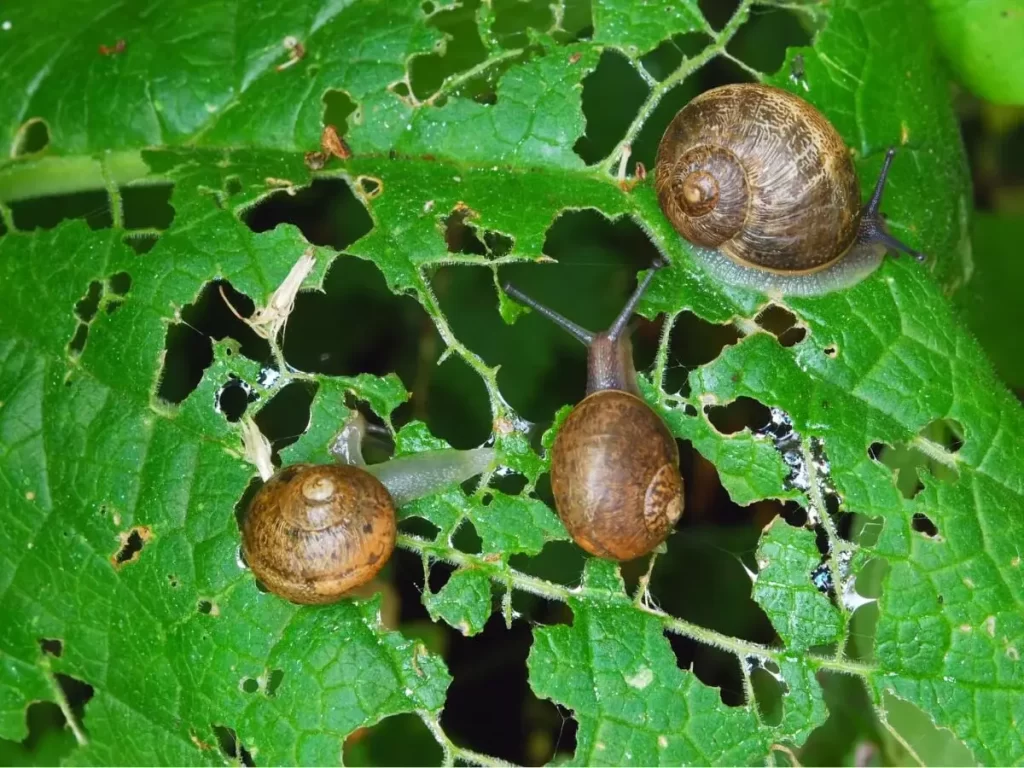
- Silvery Trails: One of the most telltale signs is the slimy, silvery trails they leave behind. These trails can often be found on plant leaves, soil, and garden paths.
- Irregular Holes in Leaves: Unlike insect pests that might create more uniform patterns, slugs and snails chew large, irregular holes in leaves. This damage is often more severe on lower leaves, closer to the ground.
- Missing Seedlings: In severe cases, entire seedlings can disappear overnight, devoured by a hungry group of slugs or snails.
What caused it?
Snails and slugs feed on decomposing organic matter, on leaves, roots, and tubers of a variety of crops. Slugs are underground dwellers living in cracks and tunnels made by plant stems or worms and only come to the surface to mate. These animals thrive in wet weather conditions, so the infestation occurs mainly after dewy nights or after rainfalls. Most species survive mild winters and become active again in spring.
Prevention Methods
- Remove Debris and Clutter: Keep your garden tidy by removing leaves, rocks, and other debris where slugs and snails can hide.
- Maintain Dry Soil Conditions: Water your plants in the morning to allow the soil to dry by evening.
- Use Drip Irrigation: Limit surface moisture by using drip irrigation instead of overhead watering.
- Copper Tape or Mesh: Place copper barriers around garden beds. Copper reacts with slug slime, deterring them.
- Crushed Eggshells or Diatomaceous Earth: Spread these around plants to create abrasive surfaces that slugs and snails avoid.
- Mulching with Sharp Materials: Use pine needles or gravel to create an inhospitable environment.
- Select high and medium-resistant varieties.
- Plant early or choose early-harvesting varieties.
- Avoid planting in heavy soils, as these are favoured by slugs.
- Plow the soil once or twice before planting to expose the slugs to predators.
- Place coffee grounds around the crop of choice to repel these pests.
- Build a fence or net around your crop.
- Use non-lethal traps such as old wet sacks and rotten wooden boards.
- Manually remove the slugs or snails to mitigate the infestation.
- Avoid excessive irrigation during the morning.
- Remove weeds from your field and the surrounding area.
- Stimulate populations of predators.
- Lift the crop as early as possible.
- Remove mulch from the field.
Natural Predators and Biological Control
Encouraging Natural Predators
- Birds, Frogs, and Toads: Attract these predators by creating habitats like ponds and birdhouses.
- Ground Beetles and Spiders: Avoid using pesticides that harm these beneficial insects.
- Chickens and Ducks: If you have a backyard, consider keeping poultry that will eat slugs and snails.
Introducing Biological Controls
- Nematodes (Phasmarhabditis hermaphrodita): These microscopic worms can be introduced to the soil to infect and kill slugs.
- Beneficial Bacteria: Use products that contain bacteria lethal to slugs.
Homemade Remedies
Beer Traps
- How to Create and Place Beer Traps: Bury a shallow container and fill it with beer. Slugs are attracted to the yeast and will drown.
- Frequency of Replacement: Replace the beer every few days to maintain effectiveness.
Salt and Vinegar Solutions
- Direct Application: Sprinkle salt or spray vinegar directly on slugs. Be cautious as these can harm plants.
- Safety Considerations: Use sparingly to avoid damaging the soil and plants.
Homemade Sprays
- Garlic Spray: Blend garlic with water and a bit of soap. Spray on plants to repel slugs.
- Coffee Grounds: Scatter used coffee grounds around plants to deter slugs.
Citrus Traps
- Using Orange and Lemon Peels: Place citrus peels around the garden to attract and trap slugs. Dispose of the peels and slugs in the morning.
Chemical Solutions
Always consider an integrated approach with preventive measures together with biological treatments if available. Because of their diversity and life cycle, slugs are generally out of reach of chemical controls. Pellets based on metaldehyde can be used to lure them out of their holes. Spread them after rain, when slugs and snails are active.
Mechanical and Physical Removal
Handpicking
- Best Times to Search: Early morning or late evening.
- Proper Disposal Methods: Drop slugs into a bucket of soapy water.
Traps and Barriers
- DIY and Commercial Traps: Use traps such as upturned flower pots or boards to attract and catch slugs.
- Placing and Maintaining Traps: Regularly check and empty traps.
Long-term Strategies
Crop Rotation and Plant Selection
- Choosing Resistant Plant Varieties: Opt for plants that are less appealing to slugs, such as ferns or ornamental grasses.
- Rotating Crops: Change the location of your plants each season to confuse and deter pests.
Garden Design
- Designing a Garden to Minimize Habitats: Avoid dense planting and maintain good air circulation.
- Companion Planting: Use plants like rosemary, thyme, and sage to repel slugs.
Monitoring and Maintenance
- How Often to Check for Slugs and Snails: Conduct weekly checks, especially during wet weather.
- Tools and Techniques for Effective Monitoring: Use flashlights at night and check under leaves and debris.
Conclusion
Gardening is a labour of love, requiring dedication, patience, and a green thumb. However, it’s also a constant battle against pests and challenges that threaten to undermine your hard work. Slugs and snails are just one of the many obstacles gardeners face, but with the right knowledge and strategies, they can be effectively managed and controlled.
Throughout this guide, we’ve explored a range of strategies for dealing with slugs and snails in your garden. From preventative measures to natural predators, homemade remedies to chemical solutions, and long-term management strategies, there are options available to suit every gardener’s preferences and circumstances.
Your garden is a reflection of your passion, creativity, and commitment to nurturing life. Don’t let slugs and snails deter you from enjoying the fruits of your labour. With the right tools and techniques, you can create a thriving oasis that brings joy and beauty to your life and the lives of those around you. So roll up your sleeves, grab your gardening gloves, and take on the challenge of controlling slugs and snails in your garden. Together, we can overcome this obstacle and create gardens that flourish and thrive for years to come.
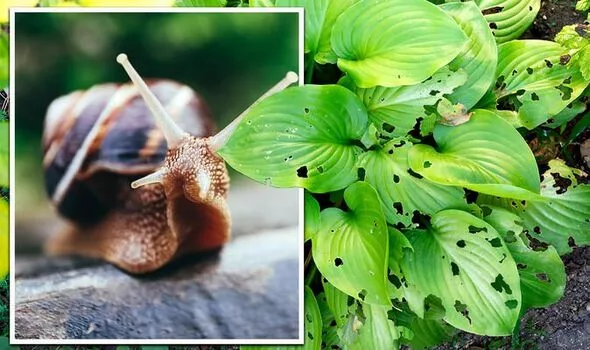
FAQ
What kills slugs instantly?
Salt kills slugs instantly by dehydrating them. When applied directly, it draws out the moisture from their bodies, causing them to shrivel and die quickly.
What do slugs hate most?
Slugs hate rough and abrasive surfaces. Materials like crushed eggshells, diatomaceous earth, and sharp sand create barriers that deter them because they find it difficult and uncomfortable to move across.
What is poisonous to slugs?
Metaldehyde and iron phosphate are common ingredients in commercial slug baits that are poisonous to slugs. However, metaldehyde can be harmful to pets and wildlife, while iron phosphate is considered safer for the environment.
How do you keep slugs and snails away?
To keep slugs and snails away:
1. Remove garden debris to eliminate hiding spots.
2. Use physical barriers like copper tape, crushed eggshells, or diatomaceous earth.
3. Encourage natural predators such as birds, frogs, and beetles.
4. Water in the morning to keep soil dry by evening.
5. Apply organic or chemical baits strategically around your garden.
Are slugs harmful to humans?
Slugs are not directly harmful to humans. However, they can carry parasites like rat lungworm, which can pose health risks if ingested. It’s best to handle them with gloves and wash produce thoroughly if slugs have been present.
Are slugs good or bad?
Slugs play a dual role in the ecosystem. They are good because they help decompose organic matter, contributing to soil health. However, they are bad for gardens as they feed on and damage plants, particularly young and tender ones.
What is the best natural slug killer?
Nematodes, particularly the species Phasmarhabditis hermaphrodita, are an effective natural slug killer. They are microscopic worms that infect and kill slugs without harming other wildlife or beneficial insects.
How do you make homemade slug spray?
Garlic Spray: Blend 2 bulbs of garlic with 1 quart of water, let it sit overnight, strain, and mix in 1 teaspoon of liquid soap. Spray on plants to repel slugs.
Coffee Spray: Brew strong coffee, let it cool, and spray it directly on slugs or around plants to deter them.
Does garlic spray stop slugs?
Yes, garlic spray is effective in repelling slugs. The strong smell and taste of garlic are unattractive to slugs, keeping them away from treated plants.
What liquid attracts slugs?
Beer is a liquid that attracts slugs. The yeast and sugars in beer draw them in, making it an effective bait for slug traps. Bury a shallow container filled with beer at soil level to trap and drown slugs.
